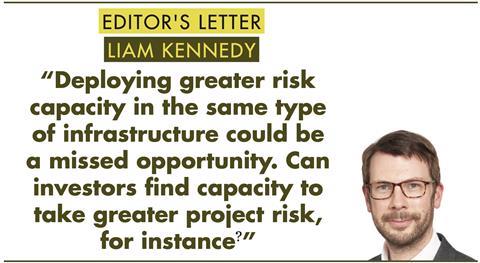Changing the rules can often seem like a very sensible policy choice – whether a sweeping deregulatory reform or more of a technocratic adjustment to regulations.

If you think people should invest more into equities, increase the quantitative investment limits on workplace pension funds. Relax the restrictions around alternatives and investment into start-ups will follow. This is the theory at least.
Politicians and regulators must strike a careful, often difficult, balance between precaution and risk. This is the case with the reform of Solvency II rules.
Politicians understandably want insurers to use their balance sheets to invest in stable, productive investments like infrastructure, particularly transformative green energy that can help climate change goals. If investors can take greater risk on a portion of the assets, beneficial investment should follow.
The balance sheets of EU life insurance entities are substantial, with assets of €4.4trn backing liabilities of €4.1bn, according to EIOPA figures for Q1 of this year. In the UK, the equivalent is €2.9trn of assets and €2.8bn of liabilities. These insurance assets are significant for three reasons.
First, long-term and retirement savings in much of continental Europe is through life insurance products.
Second, occupational pension funds are sometimes regulated as insurance entities.
Third, the growth of the UK pension risk transfer business means a significant portion of the liabilities of DB pension schemes is transferring to the insurance market as bulk-purchase annuities and longevity swaps.
The European Commission set a process in motion in 2021 to reform Solvency II and free up as much as €90bn for investment in areas such as the European Green Deal and digital transformation.
A package of measures is in negotiation in the European Parliament following agreement in the Council this summer. Final agreement is not anticipated before 2023, with enactment by the end of 2024. In the UK, the government is looking to enact an analogous package.
As well as reassessing capital requirements, the EU wants to reduce the administrative burden of Solvency II and assess biodiversity and climate risk. In the UK, the Solvency II matching adjustment is of particular interest, given the volume of pension risk transfer business that is expected in the next decade. The matching adjustment gives regulatory relief in the form of a higher discount rate than the risk-free for portions of an insurer’s balance sheet with predictable cashflows.
In a speech in May, Charlotte Gerken of the UK’s Prudential Regulation Authority (PRA) likened the bulk-purchase annuity business model to being asked to pack suitcases for every holiday you are likely to go on for the next 30 years and being responsible for the contents.
The actuarial consultancy LCP predicts cumulative risk transfer to the bulk annuity market of £530bn (€590bn) to 2032, around £50bn per year. UK bulk annuity providers have also diversified their portfolios of matching adjustment assets.
The PRA calculates that holdings of assets other than UK Gilts or corporate bonds grew from 15% of assets to 45% over the six years to 2020. These range from equity-release mortgages to infrastructure assets and social housing. The previous UK government hoped to expand investment into areas that would support its ‘levelling-up’ agenda and Solvency II reform forms part of the new administration’s regulatory reform policy.
Agreement is unlikely to come without tension between regulators and politicians weigh up the risks to policyholders.
A similar tension exists in the EU, where EIOPA chair Petra Hielkema is cautious about the direction taken by European Parliament rapporteur Markus Ferber, a German Christian Democrat. She told POLITICO last month that greater infrastructure investment is not an automatic product of regulatory reform.
Regulatory changes can be an important incentive but merely changing the rules cannot force people and organisations to do what politicians, policy wonks or others think they should do.
In any case, deploying greater risk capacity in the same type of infrastructure could be a missed opportunity. Can investors find capacity to take greater project risk, for instance?
This requires projects and governance structures suited to such long-term, permanent capital commitments.
Liam Kennedy, Editor
liam.kennedy@ipe.com























No comments yet